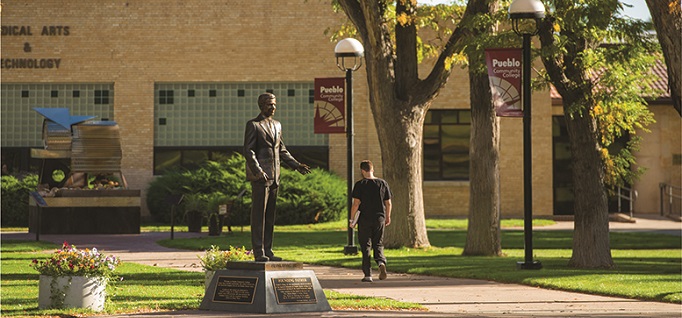Re-engaging part-time students
By Ellie Ashford
March 27, 2019
Providing wrap-around services and financial incentives can encourage part-time students to stay in college.
Part-time community college students are more likely than full-time students to leave college, but there are practices and resources that colleges can tap to keep them in school – and often colleges already have them in place.
“If we want our students to complete, simply providing excellent academic resources is not enough. We have to address the needs of the whole student,” says Patricia Erjavec, president of Pueblo Community College (PCC) in Colorado.
Erjavec and Ric Baser, president of Northwest Vista College in the Alamo Colleges District in Texas, will speak at the American Association of Community Colleges’ annual convention in April in Orlando, Florida, about the strategies they’re using to encourage part-time students who drop out to come back and complete. Magda Rolfes, practice manager at EAB, and Larisa Hussak, a consultant at EAB, will discuss the latest research findings on part-timers.
Tackling ‘summer melt’
The Alamo Colleges District has tackled the problem of part-timers stopping out by giving them a financial incentive to stay connected to college during the summer, when many part-timers stop out of college. Under the Summer Momentum Plan, any student who takes 18 credits within one year, in any combination among the two semesters, will earn three free credits for the summer session.
If they take 24 credits in a year, they get six free credits for the summer.
Part-timers are most at risk of “summer melt,” Baser says. “The longer it takes them to complete, the more opportunities there are for us to lose them.”
At Northwest Vista College, where 76 percent of the students are part-time, “we’ve been working really hard to engage these students. We follow the data very closely,” he says.
Since the Summer Momentum Plan took effect last year, the college has seen a 20 percent growth in summer enrollment over the previous year.
The Alamo district has spent about $5 million on the free courses, and it’s already starting to see results in retention, completion and graduation rates, Baser says.
Wrap-around services
Part-time students are especially vulnerable to life challenges – such as the need to support a family – that put them at risk of stopping out, notes Erjavec.
To persuade former students to come back, PCC forms strong connections with them and provides wraparound services. When they complete a semester, the college forgives their debt and they become eligible for Pell grants again.
The college started that effort about three years ago with seed money from the Colorado Impact Fund, which is supported by the Denver business community. At the time, PCC had a graduation rate of 21 percent and a retention rate in the mid-50 percent range.
Despite some doubts raised by faculty, Erjavec guaranteed the college could convince 95 percent of the dropouts to come back. The final result was a 97 percent success rate.
A study by EAB found student attendance at PCC is highly correlated with student success. Fifty-eight percent of full-time students in 2011 had completed college within six years, compared to just 19 percent of part-time students, Rolfes says.
Busting the myths
There are many false assumptions about part-timers, Rolfes says: that they are mostly older adults with jobs who want to build up their skills to enhance their employability, that students need to take at least 12 credits to be successful, and that “the overhaul required to serve these students is nearly impossible and not worth trying.”
Rolfes will present data at the convention to bust those myths. She calls the idea that all students should take 15 credit hours “completely delusional.”
What works in helping part-time students succeed is providing wrap-around services at times and places that are most convenient to students with full-time jobs or full-time family responsibilities, she says.
Rather than making them come to an office on campus, Rolfes suggests bringing counseling services to the community and providing virtual tutoring.
Pueblo Community College worked with EAB to provide more support to keep part-time students engaged in the college. It adopted EAB’s platform to develop guided pathways, for example, which offer part-time students a more prescribed plan to “get them across the finish line,” Erjavec says.
There’s more to the story! Read the full article at CC Daily.


